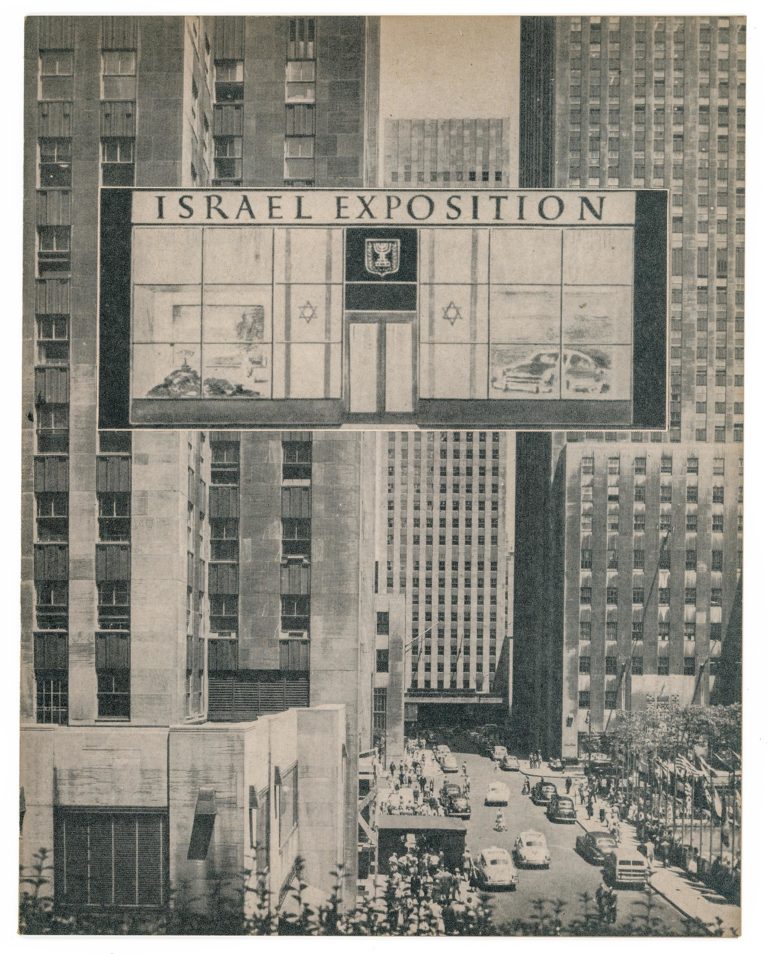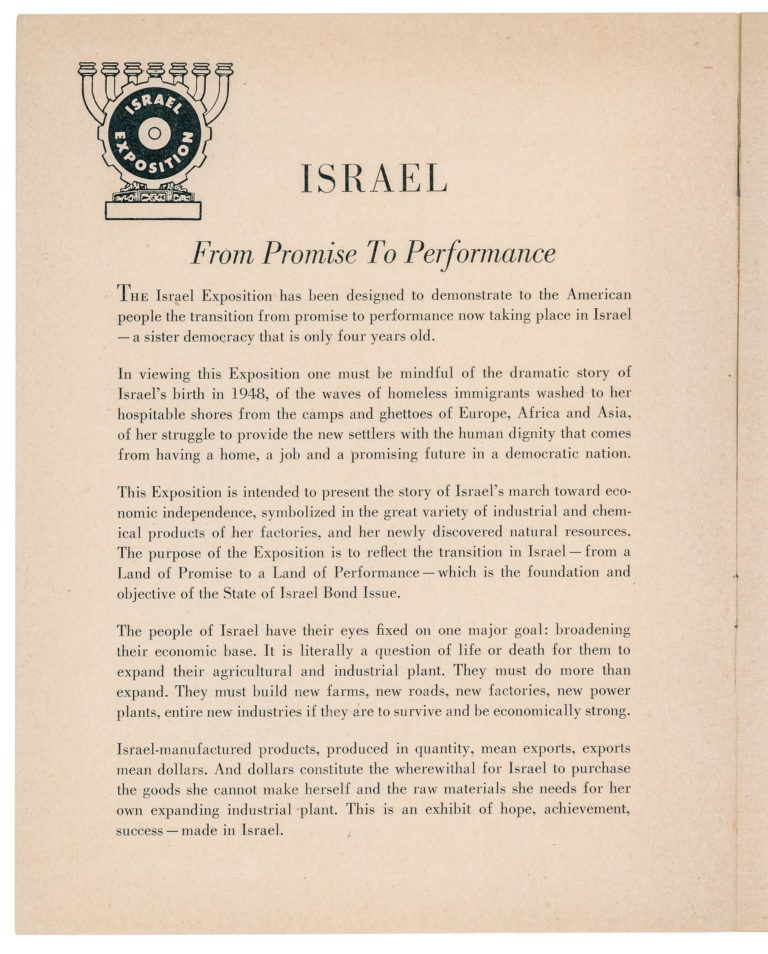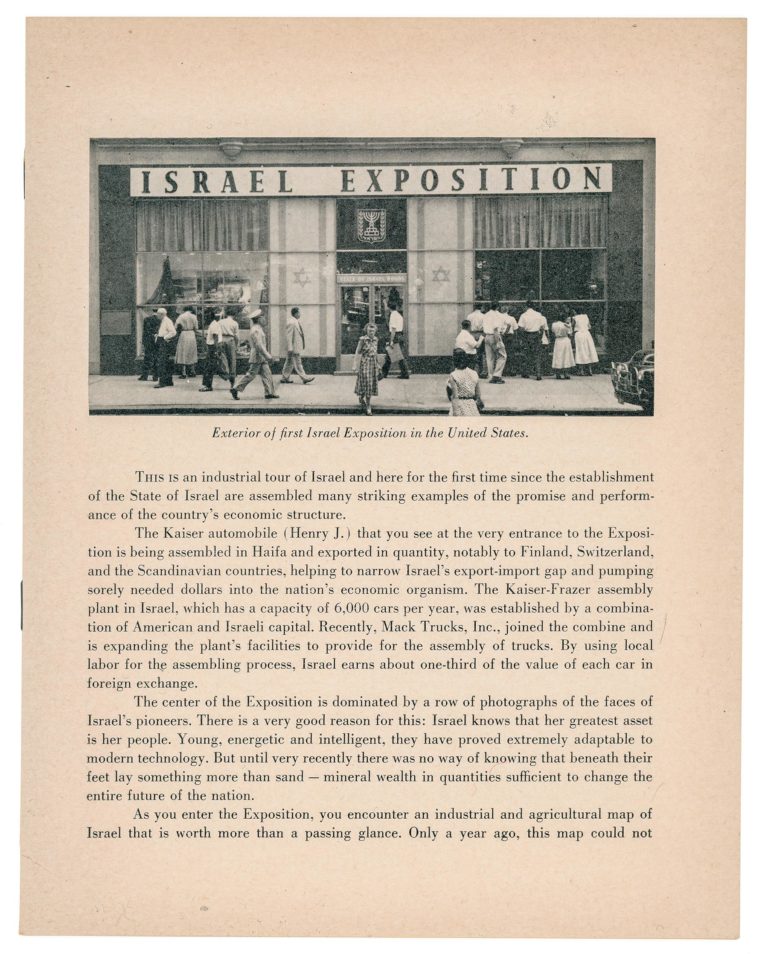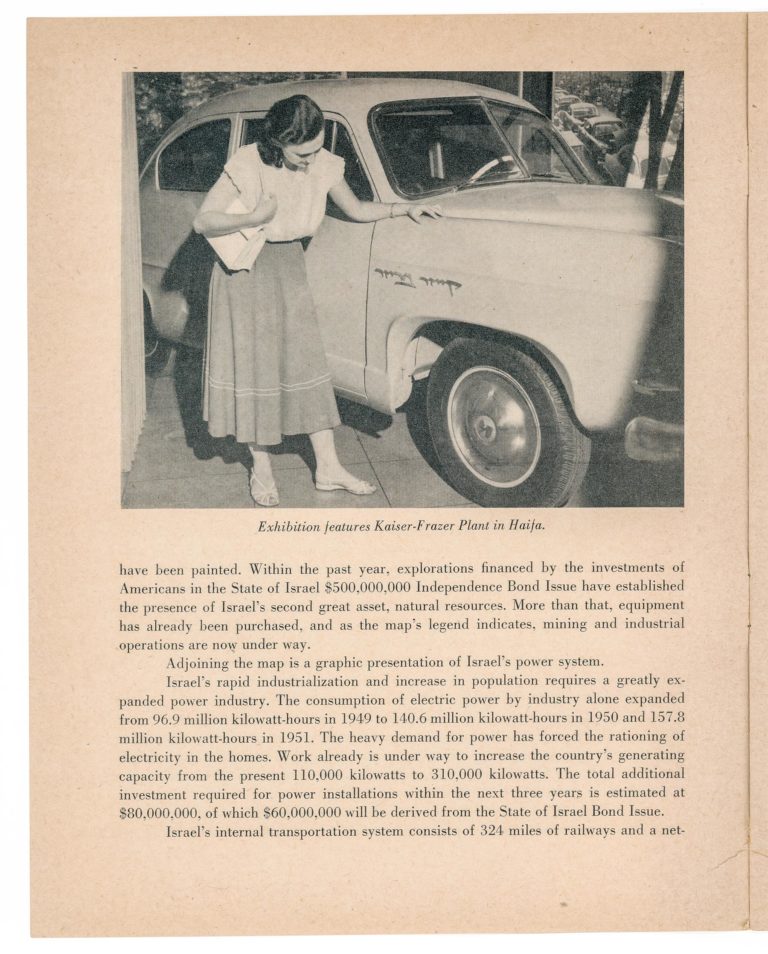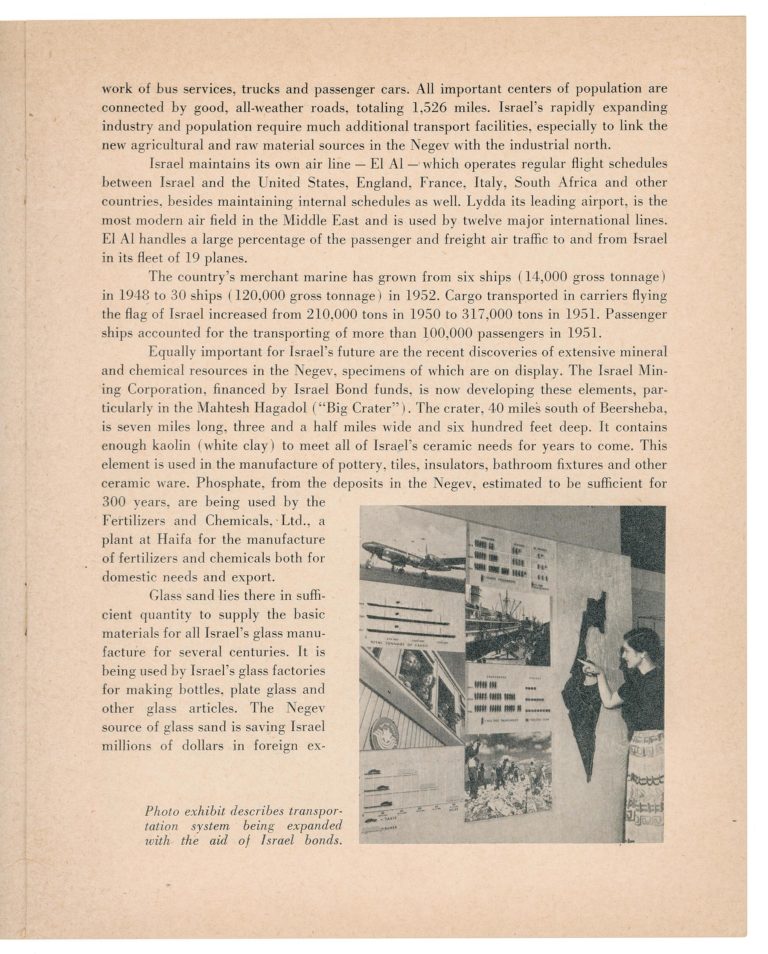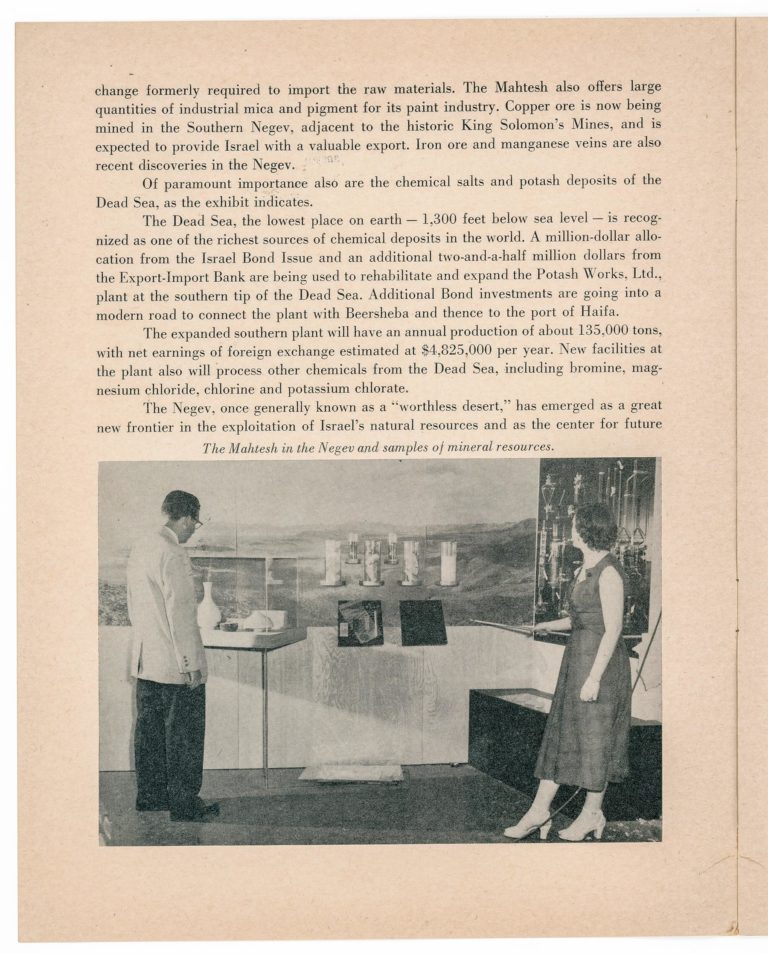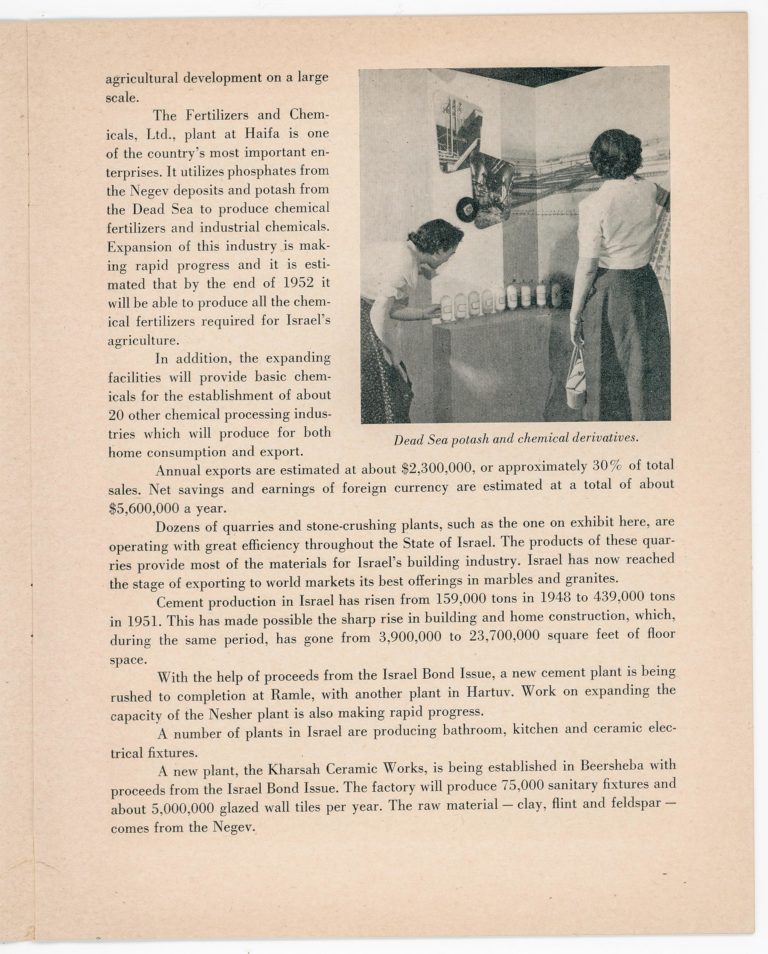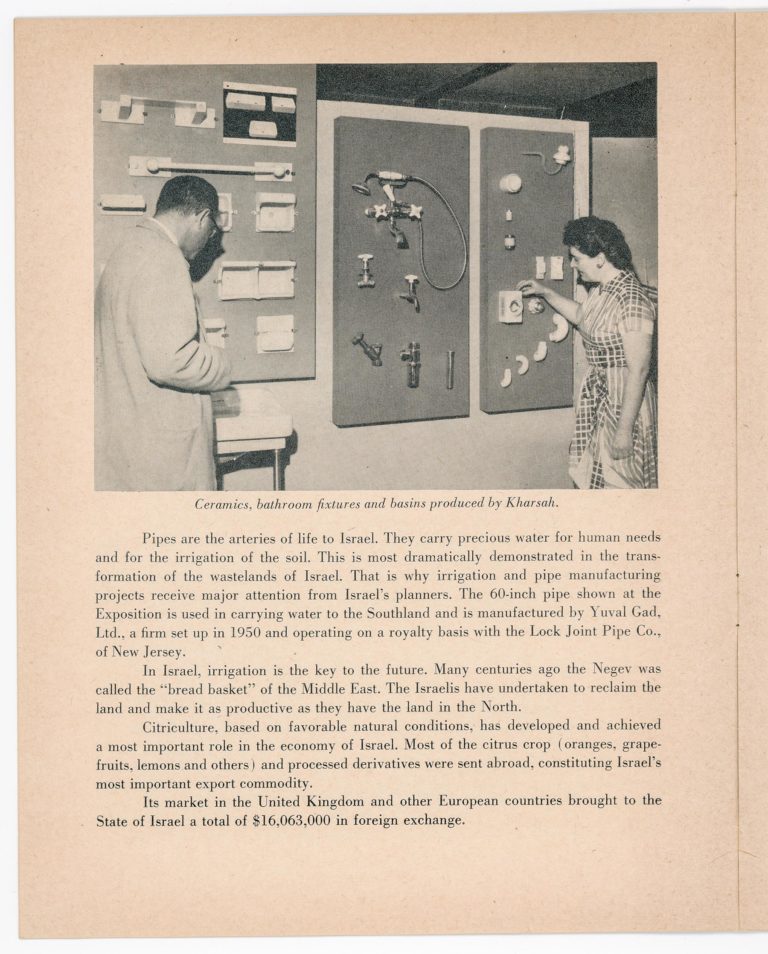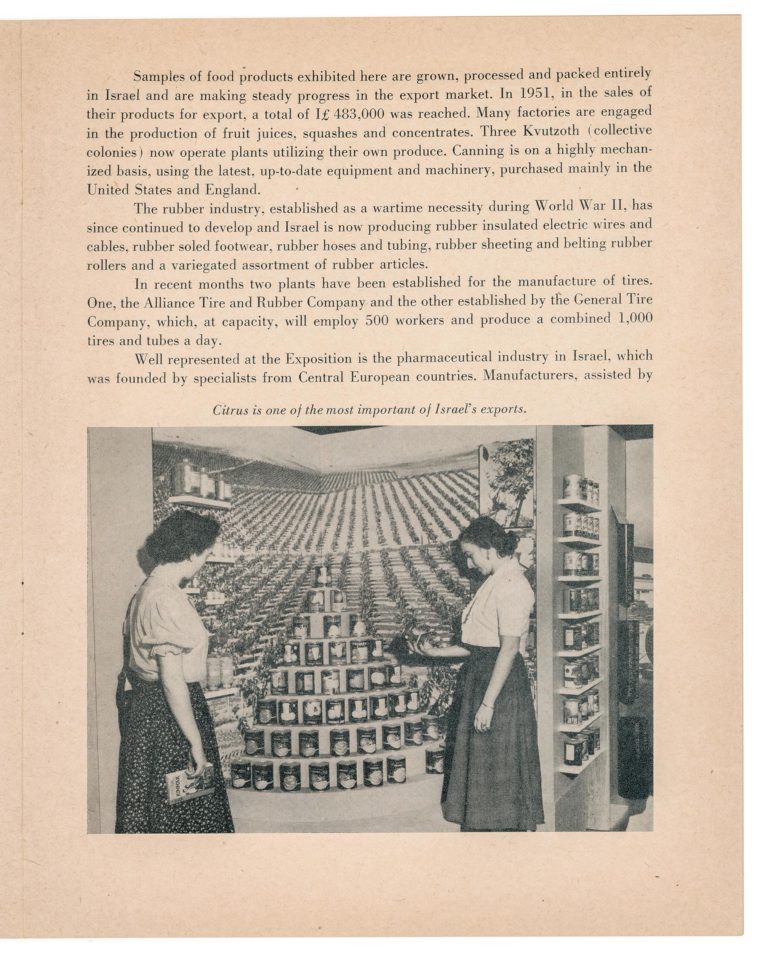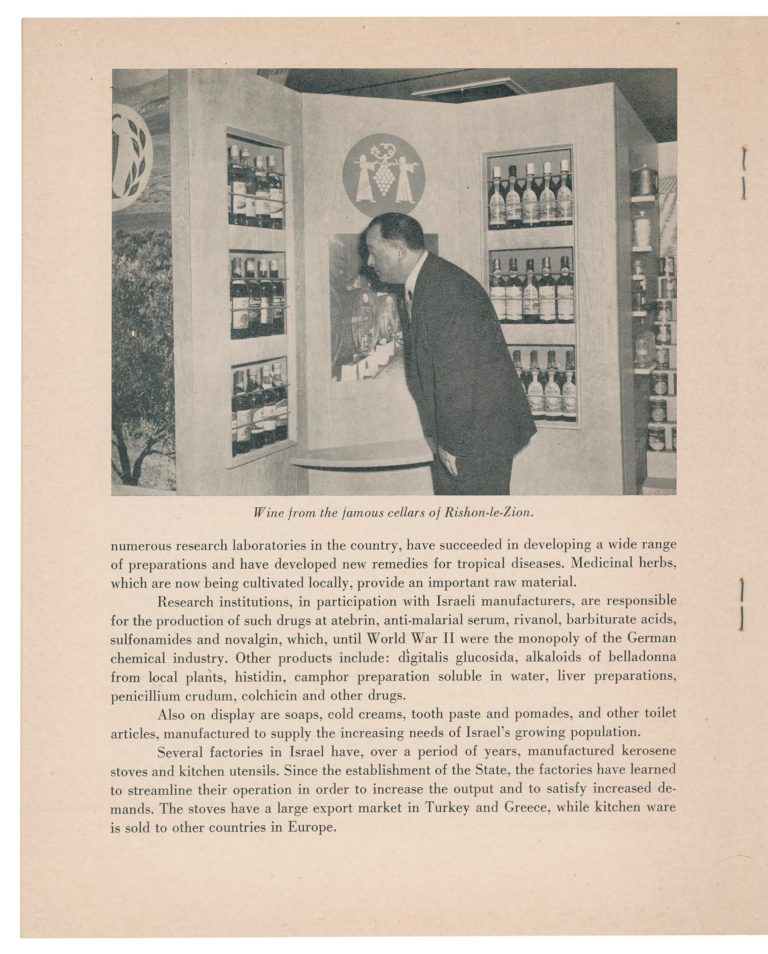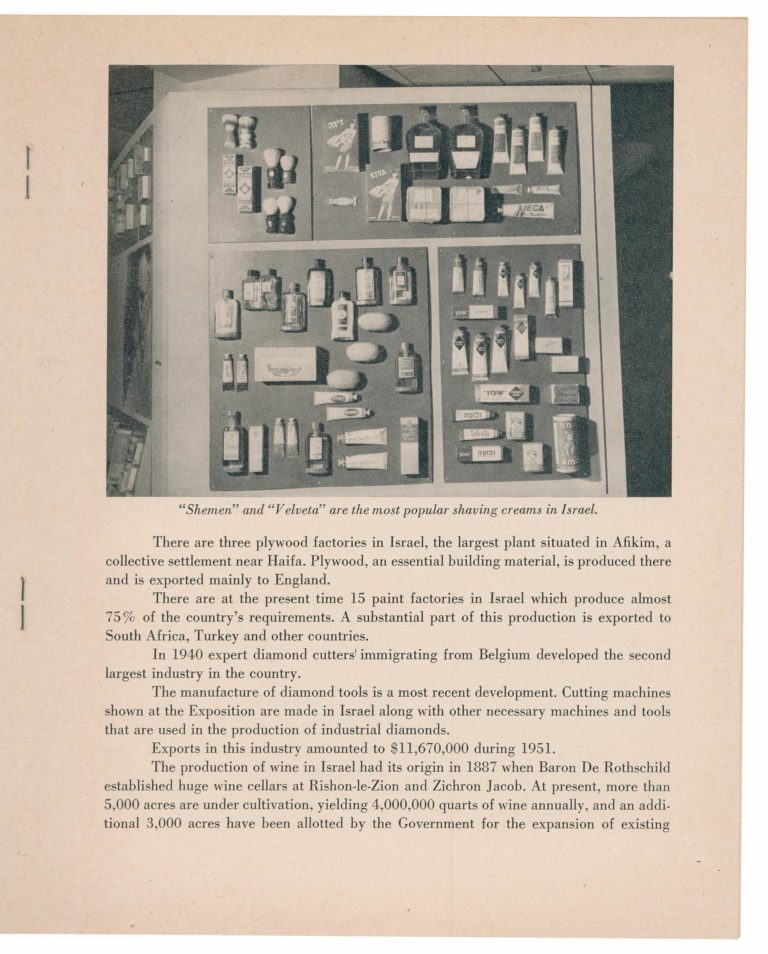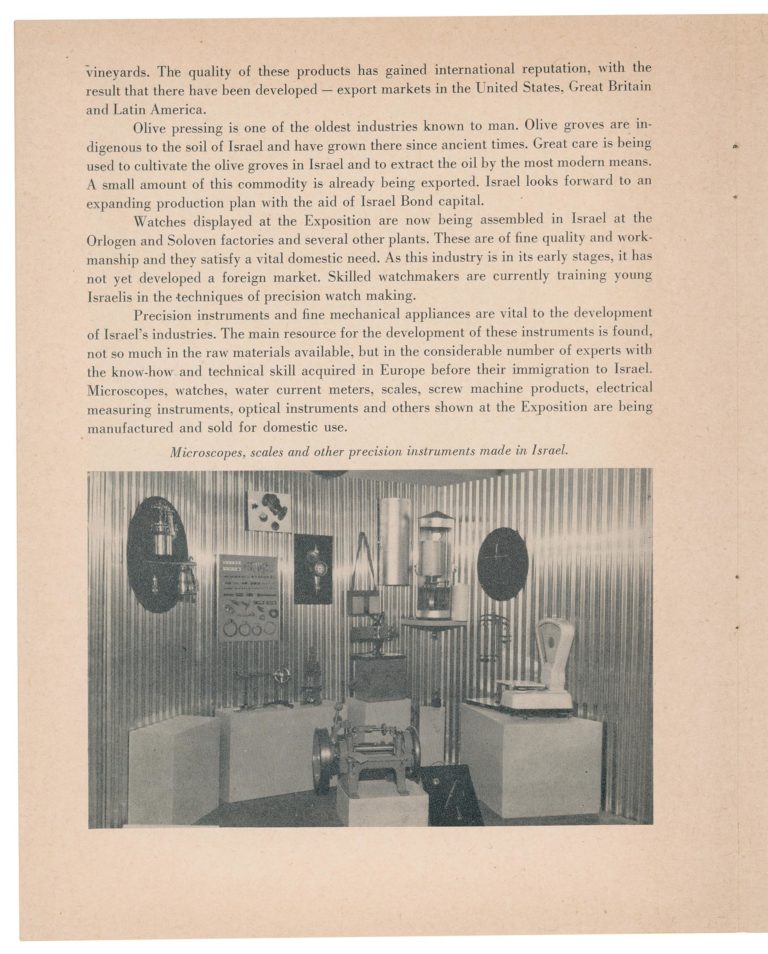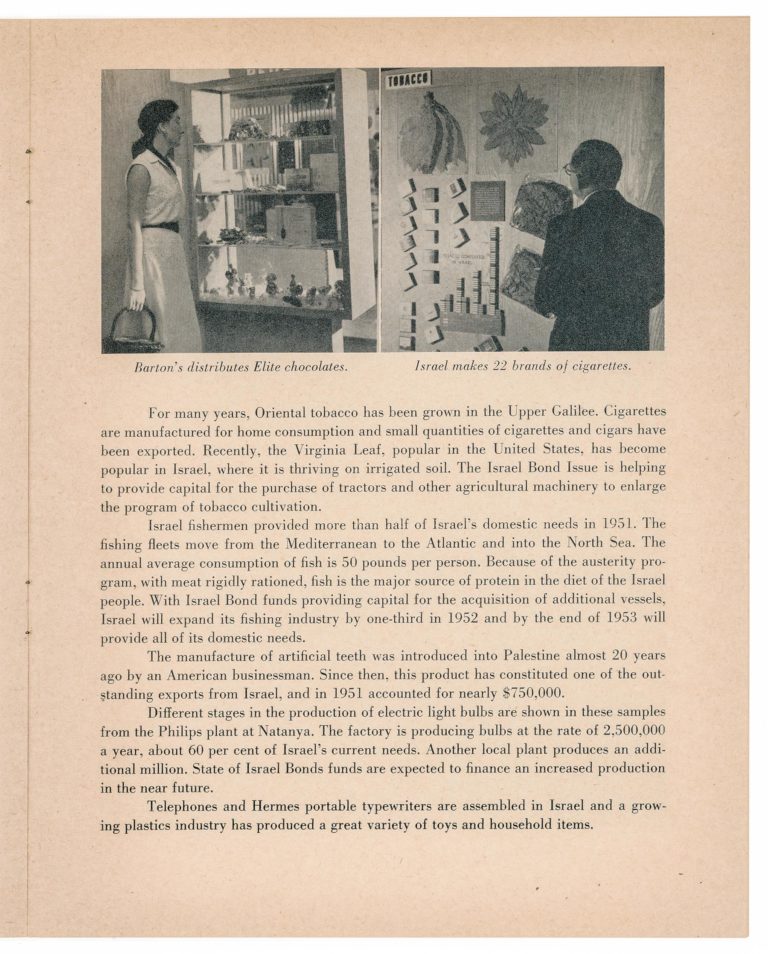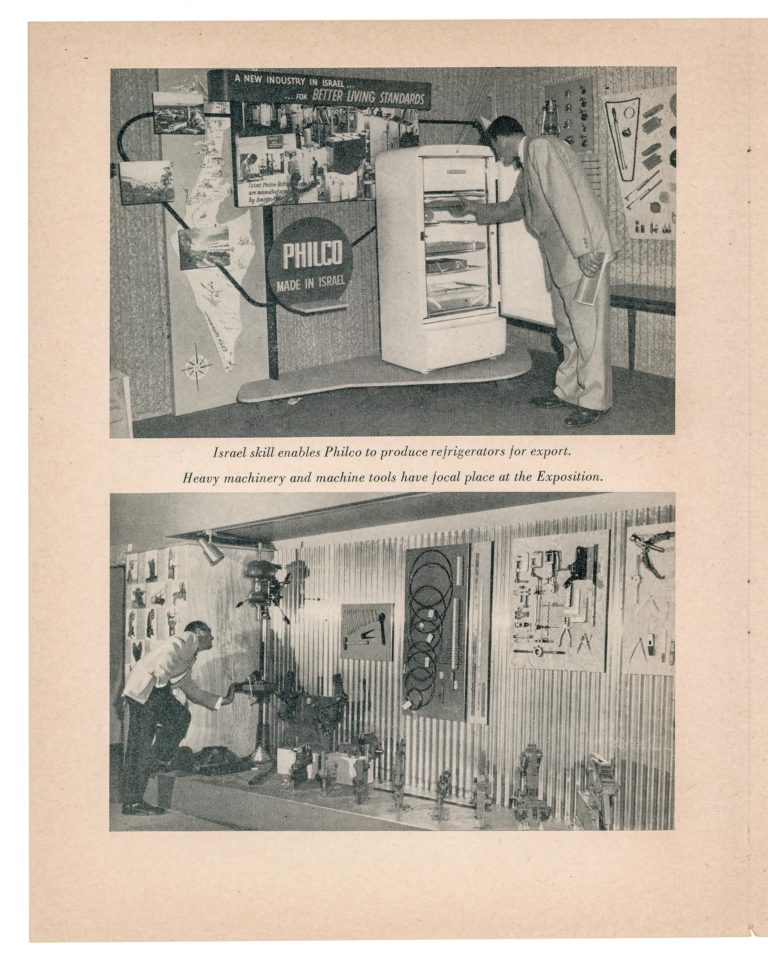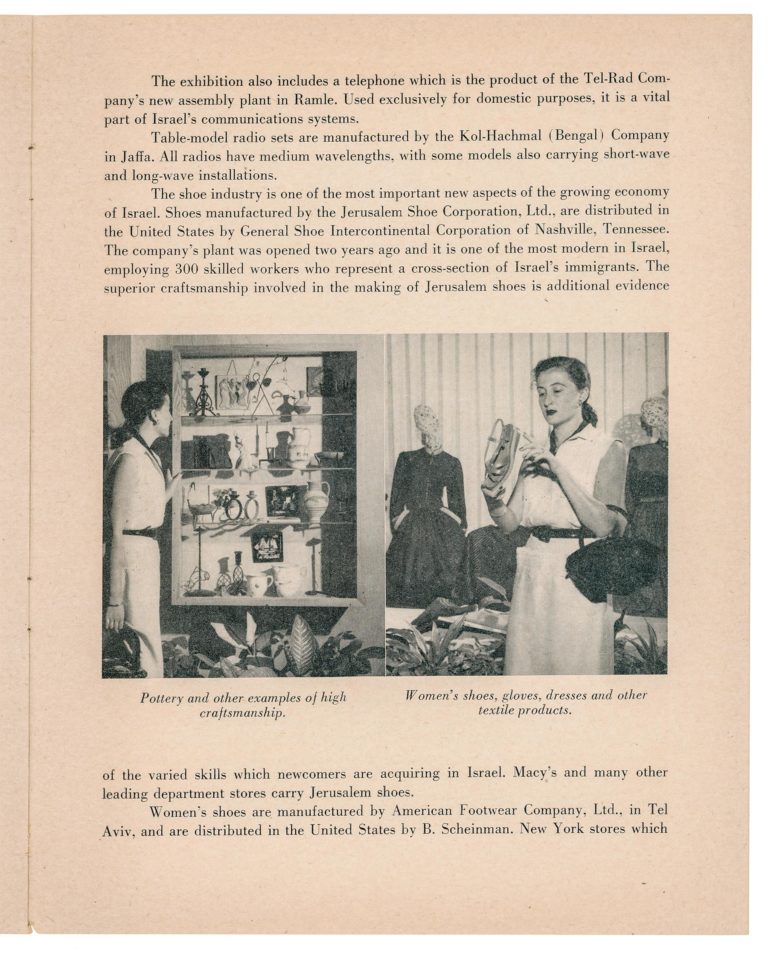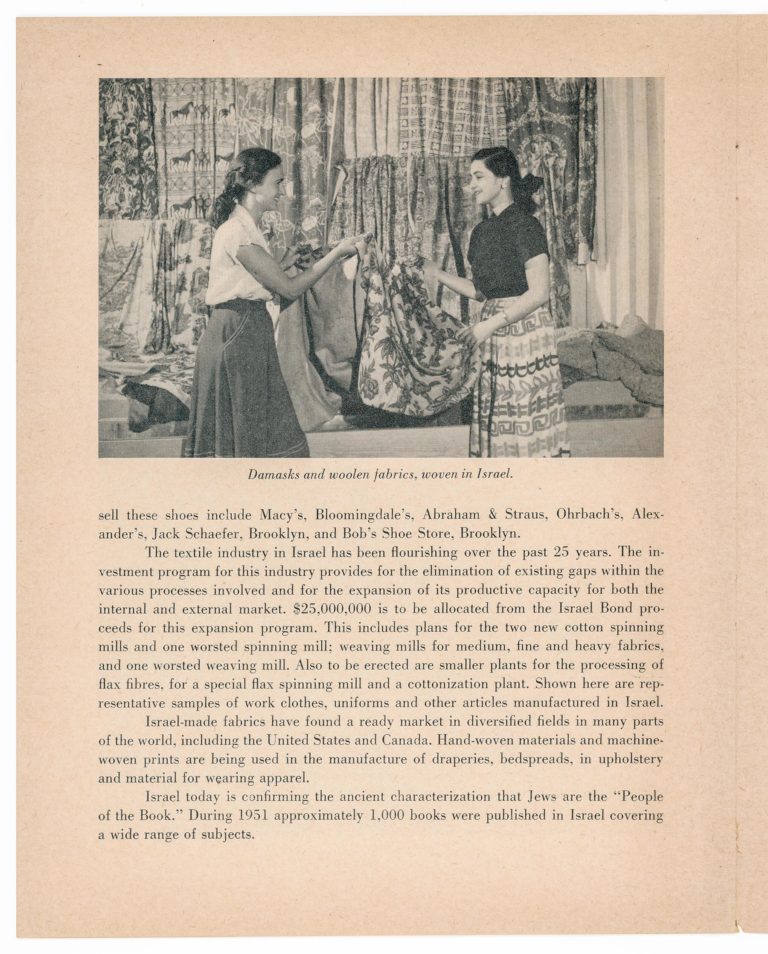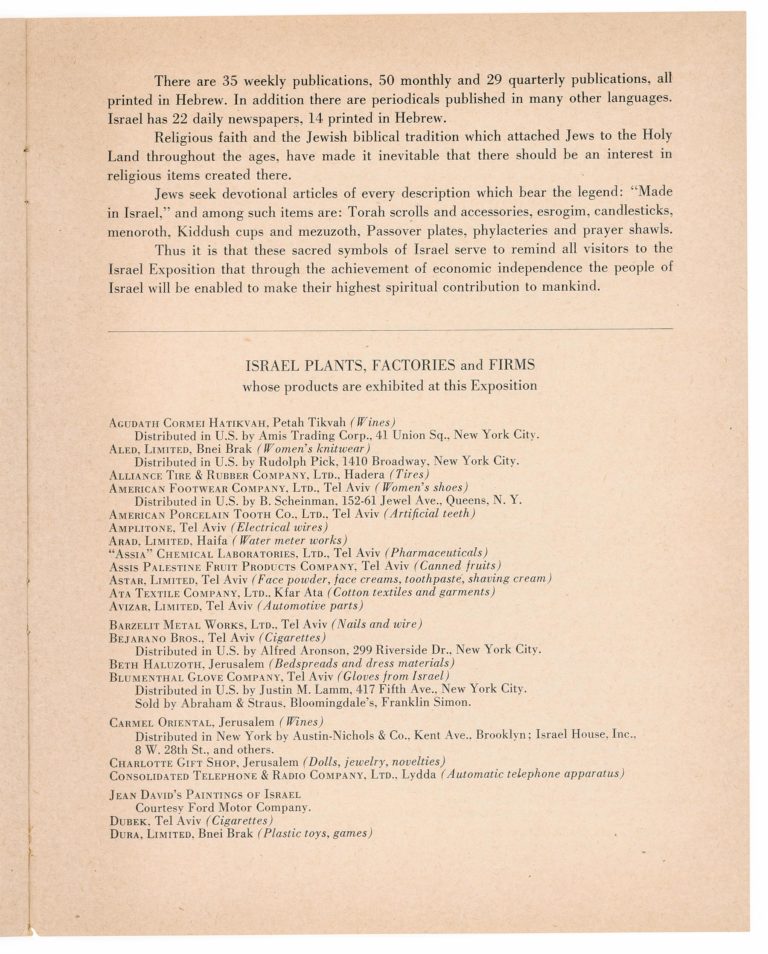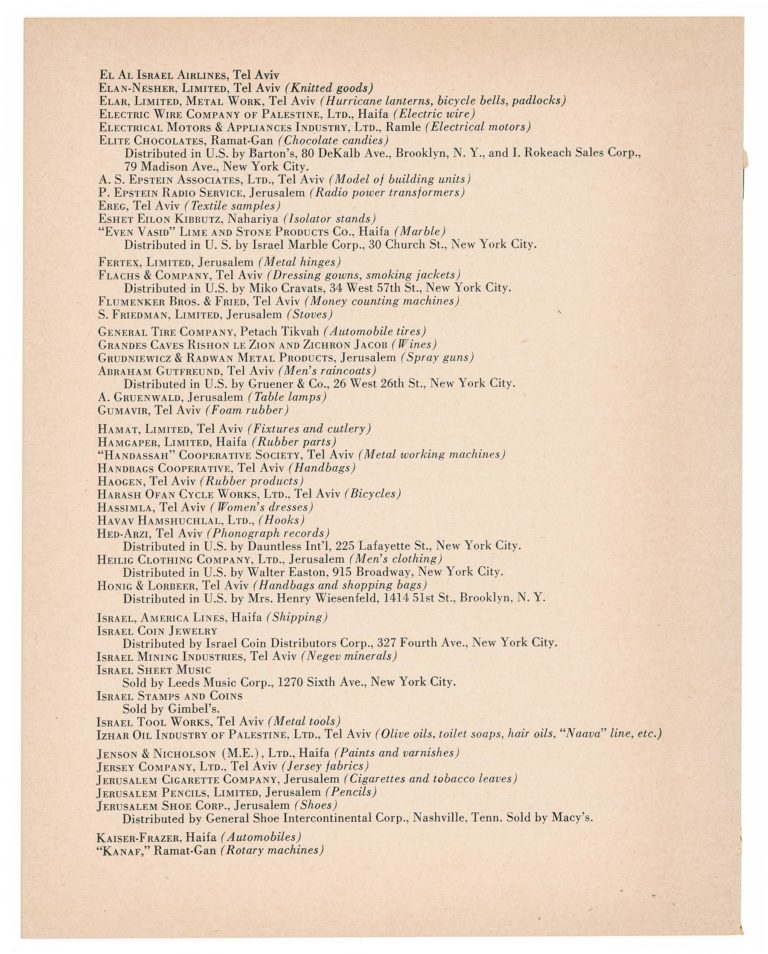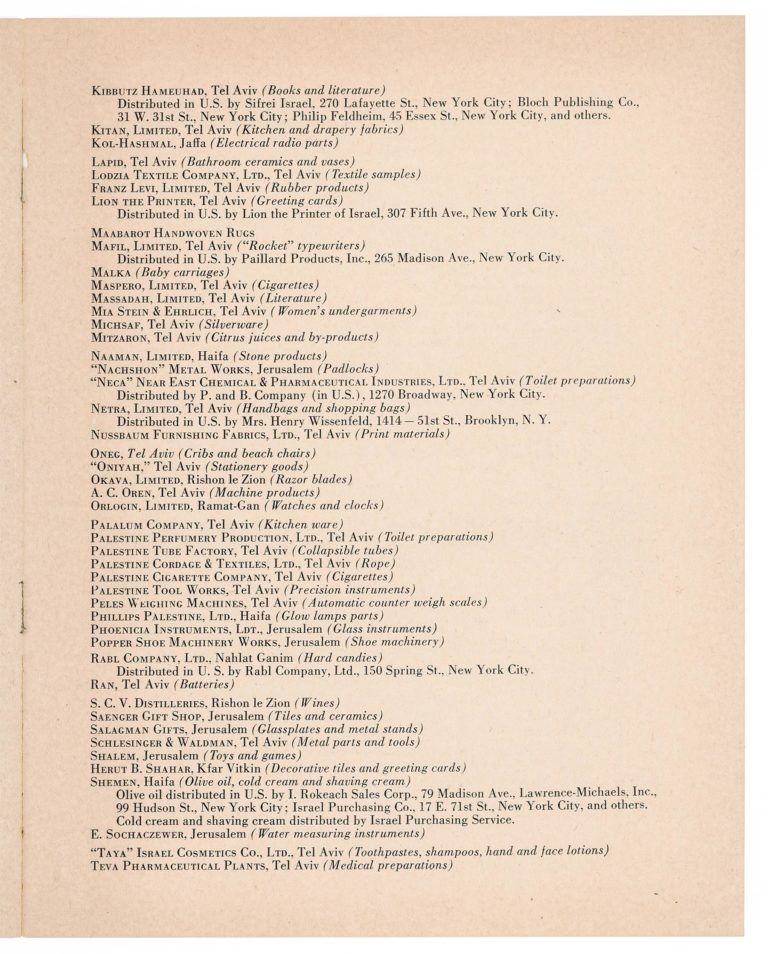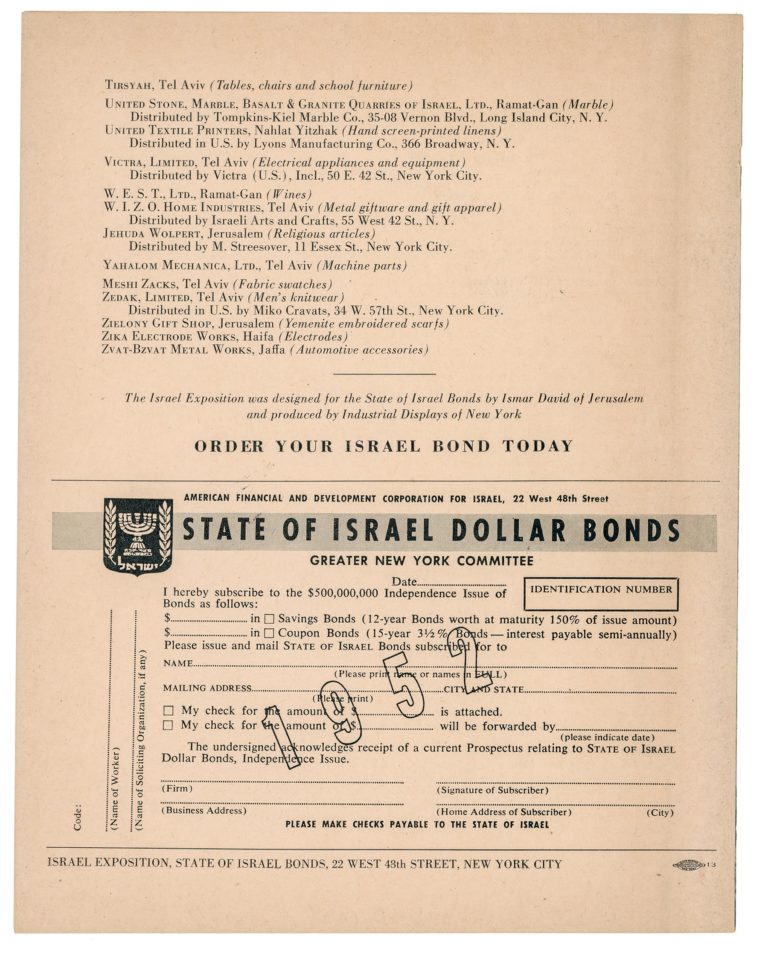Israel Exposition, in New York from July 17, 1952, in Miami from December 1952–March 1953, traveling also to Boston, Chicago, Philadelphia, Washington, Detroit, Pittsburgh, Los Angeles, San Francisco.
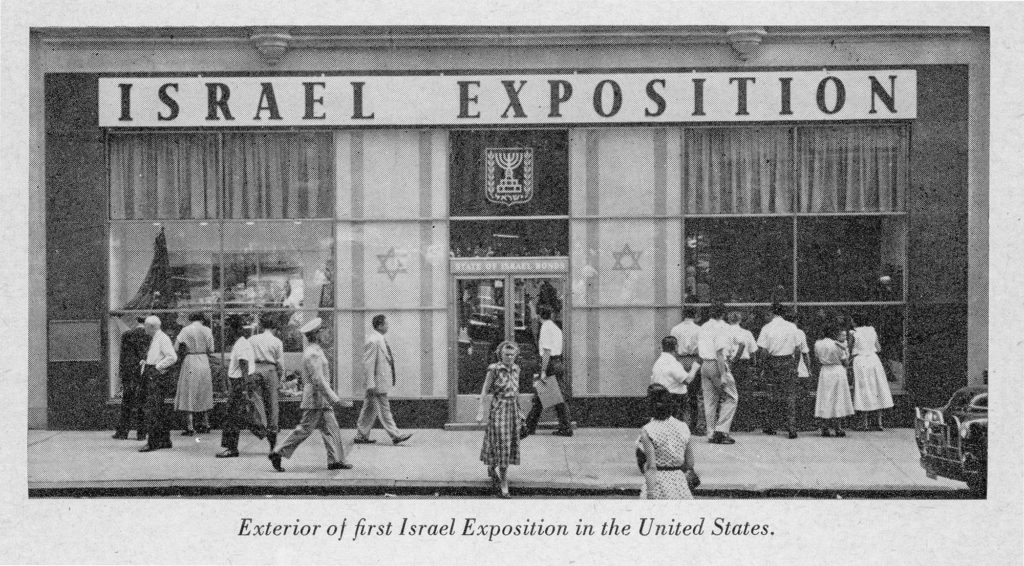
In the aftermath of the 1948 Arab–Israeli War, Israel faced financial devastation. The local population had few resources and suffered food shortages and rationing. In addition, the state had to accommodate the arrival of hundreds of thousands of immigrants from post World War II Europe and the Middle East. Prime Minister David Ben-Gurion issued the Bonds for Israel in order to raise funds for immigrant absorption and the construction of national infrastructure, as well as to engage diaspora Jewry as active partners in building the state. American Jewish leaders supported the plan and in the spring of 1951, the Prime Minister traveled to New York City to help launch the inaugural Independence Issue. Expectations for first-year sales were $25 million. However, the results more than doubled projections.
Ismar David arrived in New York on April 2, 1952 to design and install two exhibitions in support of a massive bond drive. He stayed for close to a year.
Over a period of five weeks, El Al flew two hundred crates of Israel products and other samples to New York, including “every-day Israel consumer commodities: dental creams and powders, shaving cream, soaps, canned juices and foodstuffs, clothing or men, women and children, newspapers, books and recordings, hand showers and bathtubs, pharmaceuticals, wines, candy.” 1The Paterson Evening News Fri Jul 11, 1952, p. 12. A Kaiser Frazer automobile was on display, as well as, tires made by the General Tire and Alliance Tire and Rubber Company and fertilizers from a huge chemical plant in Haifa. Samples of newly discovered mineral deposits (copper, kaolin, glass sand) deposits in the Maktesh Gadol, a large crater in the Negev, were another highlight. David himself found the 9,000 sq. ft space at 22 West 48th Street at Rockefeller Center that would house the exhibition which publicity touted as the first since Israel had become a state. The wife of New York City mayor Vincent R. Impellitteri cut the ribbon on opening day, July 17, 1952. A message from Israeli Ambassador Abba Eban was shared with the crowd. When Israeli Deputy Premier, Eliezer Kaplan, a signatory of the Israeli Declaration of Independence and an initiator of the State of Israel Bonds, died the Sunday before the opening, Abba Eban flew in to dedicate the exposition to him.
The New York exposition was to run for two months. Several of David’s clients were among the exhibits: Charlotte Shop, Nesher, Flachs & company, S.Friedman, Ltd., Jerusalem Shoe Corporation, Kaiser Frazer and Teva Pharmaceuticals. The press noted:
Ismar David, prominent Israel designer and artist, who helped set up the Palestine Pavilion at the New York World’s Fair in 1939, was brought here by the Israel Bond drive to supervise establishment of the Exposition” 2 Patterson Evening News, July 11, 1952, p. 12.
The Miami exposition on 1604 Washington Avenue ran from December 28, 1952 until March 5, 1953. The wife of Joseph Cherner, chairman of the Israel Exposition Committee, cut the ribbon stretched across its entryway before an estimated crowd of 3,500 on opening day. As she had for the exposition in New York, Helen Rossi had assisted by tracking down products to exhibit. In the draft of an undated letter, David wrote to Rossi:
And also want to tell you how I have appreciated your work collecting all those item[s] for the two exhibitions of Israel[i] products for the Bonds for Israel. Without your effort both exhibitions would never have materialize[d]. I can imagine how you went from place to place until you got finally everything together.
Both exhibitions have been a success. The second one which has its first showing in Miami is much nicer than the first one. Partly because the exhibits you collected are nicer and partly because mistakes I did the first time I didn’t repeat the second time. On the contrary I was able to use the experience of the first and improve the design. I have not been able to persuade Mr. Steinglass to have photos made and sent to Israel. I myself have not a single one. The manager of the exhibition in Miami through whom I hoped to get at least some photos on my expense has in the meantime be[en] recalled and so I have no way to get any.3 Ismar David papers, box 1, folder 4, Cary Graphic Arts Collection, RIT.


























